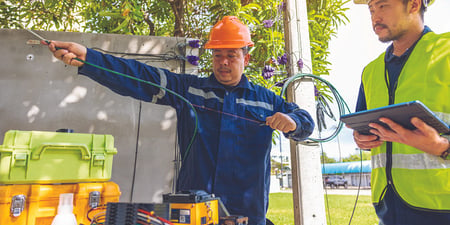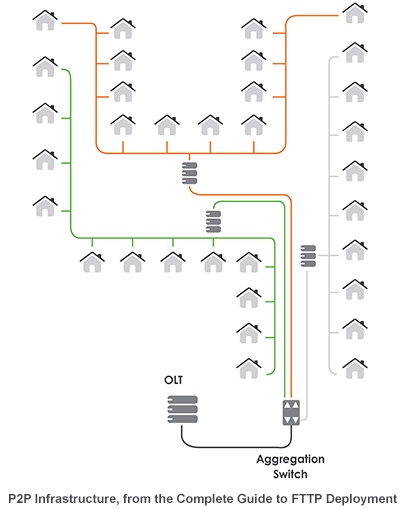 The socio-economic benefits of fiber are beyond question. Fiber to the Premise (FTTP) can boost economic development, spark innovation and improve the way people live and work.
The socio-economic benefits of fiber are beyond question. Fiber to the Premise (FTTP) can boost economic development, spark innovation and improve the way people live and work.
For network operators looking to deploy FTTP there are multiple factors that need to be taken into account when planning an installation. These include:
- Topography
- Regulation
- Technical choices
- Implementation cost
- The need to future-proof investment
Every deployment is different. Therefore to help network operators make the right choices for their implementation we’ve created the Complete Guide to Fiber to the Premises Deployment eBook. Over the next few months we’ll summarize some of the key points of the guide in a series of blog posts, beginning with fiber architectures.
Fiber Architectures - Strengths and Weaknesses
Two of the most common fiber architectures are Passive Optical Networking (PON) and Point to Point (P2P).
Passive Optical Networking
In a Passive Optical Networking architecture the operator deploys an Optical Line Terminal (OLT) in the Point of Presence (POP) or central office. One fiber runs to the passive optical splitter and a fan-out connects a maximum of 64 end users with each having an Optical Networking Unit (ONU) at the point where the fiber terminates.
Point to Point Architecture
In contrast, a Point to Point (P2P) architecture is more complex. It has a core switch at the central office, which connects over optical fiber cables to an aggregation switch at the distribution point, typically located at a street corner. These aggregation switches have many fiber ports and each port directly connects to an Optical Network Termination (ONT), which is located inside or outside the customer’s residence or business premises.

Each option has its own strengths and weaknesses:
PON Positives:
- A PON infrastructure is much less expensive to implement and maintain than P2P. This is because it uses fewer ports to terminate fiber and less fiber cables.
- The fiber splitters at the center of a PON infrastructure don’t require any power supply and can therefore be located virtually anywhere.
- Faster to deploy than a more complex P2P infrastructure.
Negatives:
- PON infrastructures offer a limited level of bandwidth as it is shared between multiple subscribers. However if the aim is to offer a set bandwidth (such as 100Mb download speeds) as cost effectively as possible, it is more cost-effective to build than a more expensive P2P network.
- Bandwidth is asymmetric, with much greater download capacity compared to upload.
- Once implemented a PON network is more difficult to update, particularly if bandwidth requirements change.
- As optical splitters have both bandwidth limitations (particularly upstream) and incur high attenuation losses they will always be subject to obsolescence where a competing P2P architecture exists.
P2P Positives:
- Each port of the aggregation switch is dedicated to individual premises with P2P – there is no sharing. This means higher bandwidth per port – and hence per premise – is possible with P2P. If the future requires +1Gb per customer then a P2P architecture will be the only way to support it.
- P2P provides symmetrical bandwidth, with identical upload and download capacity. This is critical for applications like HD video conferencing and peer-to-peer file sharing.
- P2P is easier to test/maintain and delivers maximum flexibility where there is a mix of customers and demand levels.
- Future-proofed and able to grow with bandwidth and capacity needs.
Negatives:
- Greater cost, as there are more components involved.
- Potentially longer rollout time as it requires more street cabinets than PON, leading to higher capital expenditure costs.
Network operators need to consider these factors when designing their architectures. Do they build for what they need now (PON) or future-proof infrastructure by making it expandable for the future (P2P)? Inevitably, there will be a trade-off between cost and network efficiency, and the operator will have to decide which criterion is given preference.
Whichever choices are made at the planning stage, operators will then need to look at how they overcome the challenge of the last drop between the core network and the customer premises. In our next blog we’ll investigate the factors that impact this part of the network - in the meantime you can read the full story by downloading the Complete Guide to Fiber to the Premises Deployment ebook here.




